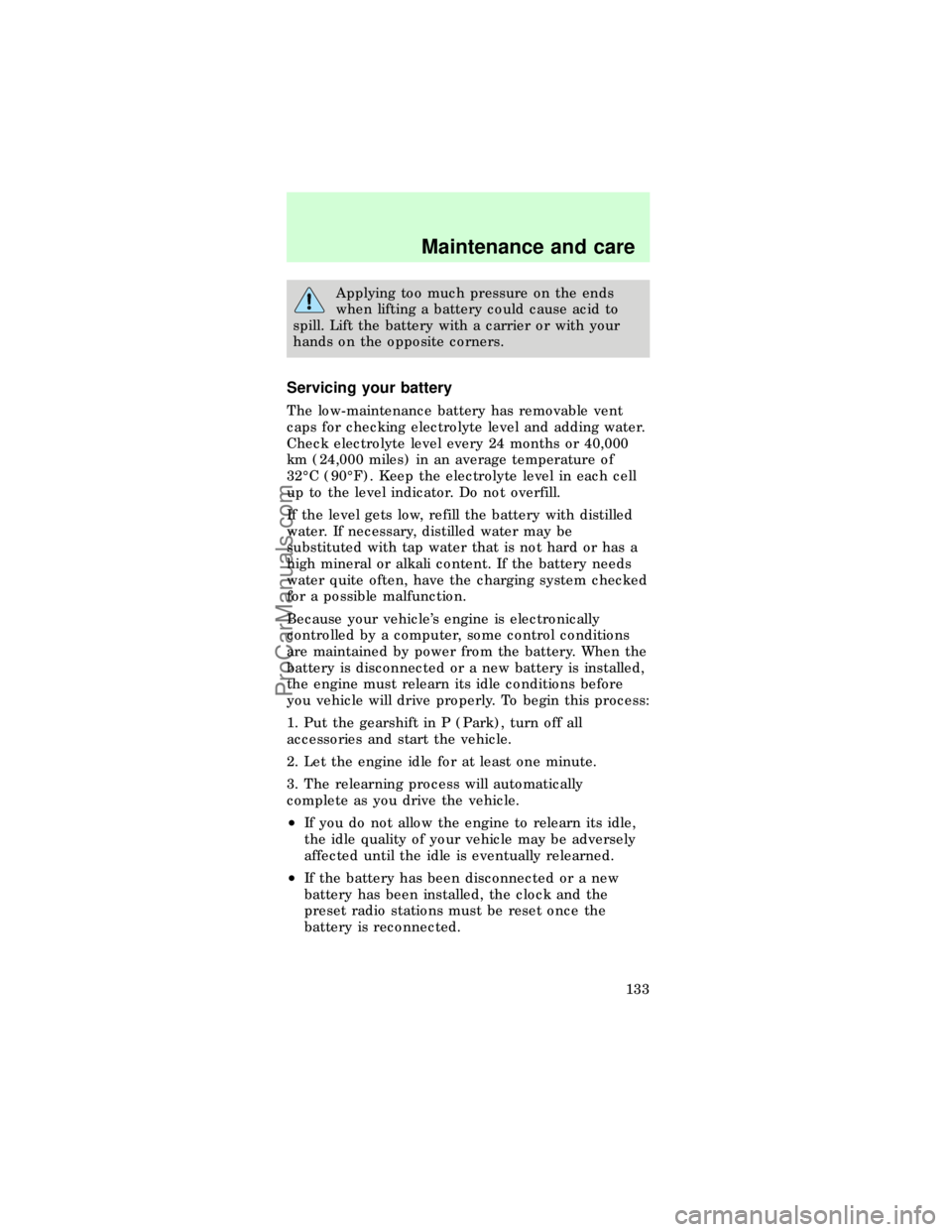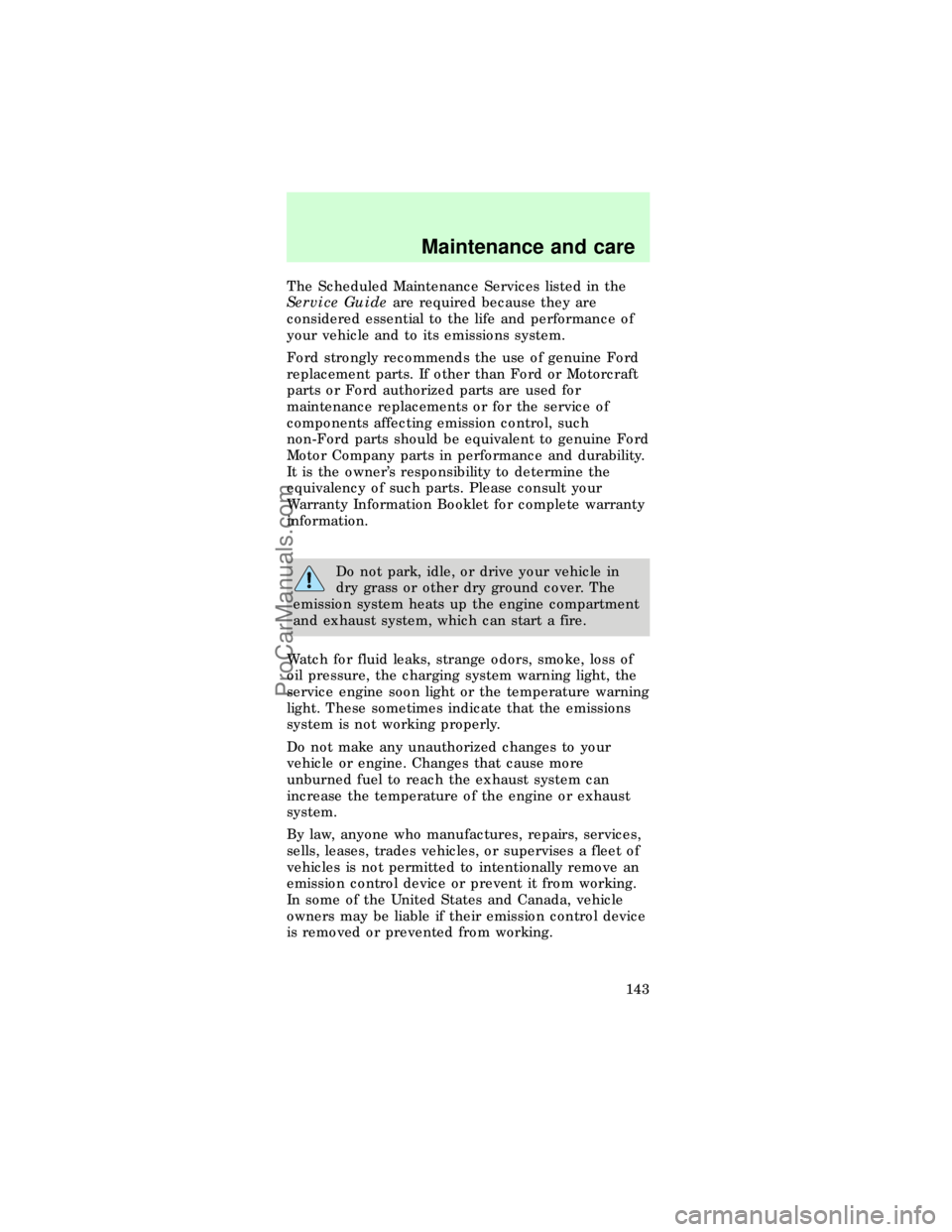Page 8 of 167

Cruise control (if equipped)
This light comes on
when the cruise control
ON button is pressed.
It turns off when the
cruise control OFF
button is pressed or when the ignition is turned to
the OFF position.
Brake system warning
Extinguishes when the
parking brake is
released. Illumination
after releasing the
parking brake indicates low brake fluid level.
Engine oil pressure
When the oil pressure
is below the normal
operating range, this
lamp will illuminate.
The engine oil level being too high or too low could
cause this lamp to illuminate. This lamp will come
on when the ignition is first turned on but then
should turn off. If the lamp stays on, continued
operation will cause severe engine damage.
Charging system
Briefly illuminates
when the ignition is
turned on and the
engine is off. The light
also illuminates when the battery is not charging
properly, requiring electrical system service.
Air bag readiness
Briefly illuminates
when the ignition is
turned on and the
engine is off. If the
CRUISE
P!
BRAKE
Instrumentation
9
ProCarManuals.com
Page 132 of 167

Applying too much pressure on the ends
when lifting a battery could cause acid to
spill. Lift the battery with a carrier or with your
hands on the opposite corners.
Servicing your battery
The low-maintenance battery has removable vent
caps for checking electrolyte level and adding water.
Check electrolyte level every 24 months or 40,000
km (24,000 miles) in an average temperature of
32ÉC (90ÉF). Keep the electrolyte level in each cell
up to the level indicator. Do not overfill.
If the level gets low, refill the battery with distilled
water. If necessary, distilled water may be
substituted with tap water that is not hard or has a
high mineral or alkali content. If the battery needs
water quite often, have the charging system checked
for a possible malfunction.
Because your vehicle's engine is electronically
controlled by a computer, some control conditions
are maintained by power from the battery. When the
battery is disconnected or a new battery is installed,
the engine must relearn its idle conditions before
you vehicle will drive properly. To begin this process:
1. Put the gearshift in P (Park), turn off all
accessories and start the vehicle.
2. Let the engine idle for at least one minute.
3. The relearning process will automatically
complete as you drive the vehicle.
²If you do not allow the engine to relearn its idle,
the idle quality of your vehicle may be adversely
affected until the idle is eventually relearned.
²If the battery has been disconnected or a new
battery has been installed, the clock and the
preset radio stations must be reset once the
battery is reconnected.
Maintenance and care
133
ProCarManuals.com
Page 142 of 167

The Scheduled Maintenance Services listed in the
Service Guideare required because they are
considered essential to the life and performance of
your vehicle and to its emissions system.
Ford strongly recommends the use of genuine Ford
replacement parts. If other than Ford or Motorcraft
parts or Ford authorized parts are used for
maintenance replacements or for the service of
components affecting emission control, such
non-Ford parts should be equivalent to genuine Ford
Motor Company parts in performance and durability.
It is the owner's responsibility to determine the
equivalency of such parts. Please consult your
Warranty Information Booklet for complete warranty
information.
Do not park, idle, or drive your vehicle in
dry grass or other dry ground cover. The
emission system heats up the engine compartment
and exhaust system, which can start a fire.
Watch for fluid leaks, strange odors, smoke, loss of
oil pressure, the charging system warning light, the
service engine soon light or the temperature warning
light. These sometimes indicate that the emissions
system is not working properly.
Do not make any unauthorized changes to your
vehicle or engine. Changes that cause more
unburned fuel to reach the exhaust system can
increase the temperature of the engine or exhaust
system.
By law, anyone who manufactures, repairs, services,
sells, leases, trades vehicles, or supervises a fleet of
vehicles is not permitted to intentionally remove an
emission control device or prevent it from working.
In some of the United States and Canada, vehicle
owners may be liable if their emission control device
is removed or prevented from working.
Maintenance and care
143
ProCarManuals.com